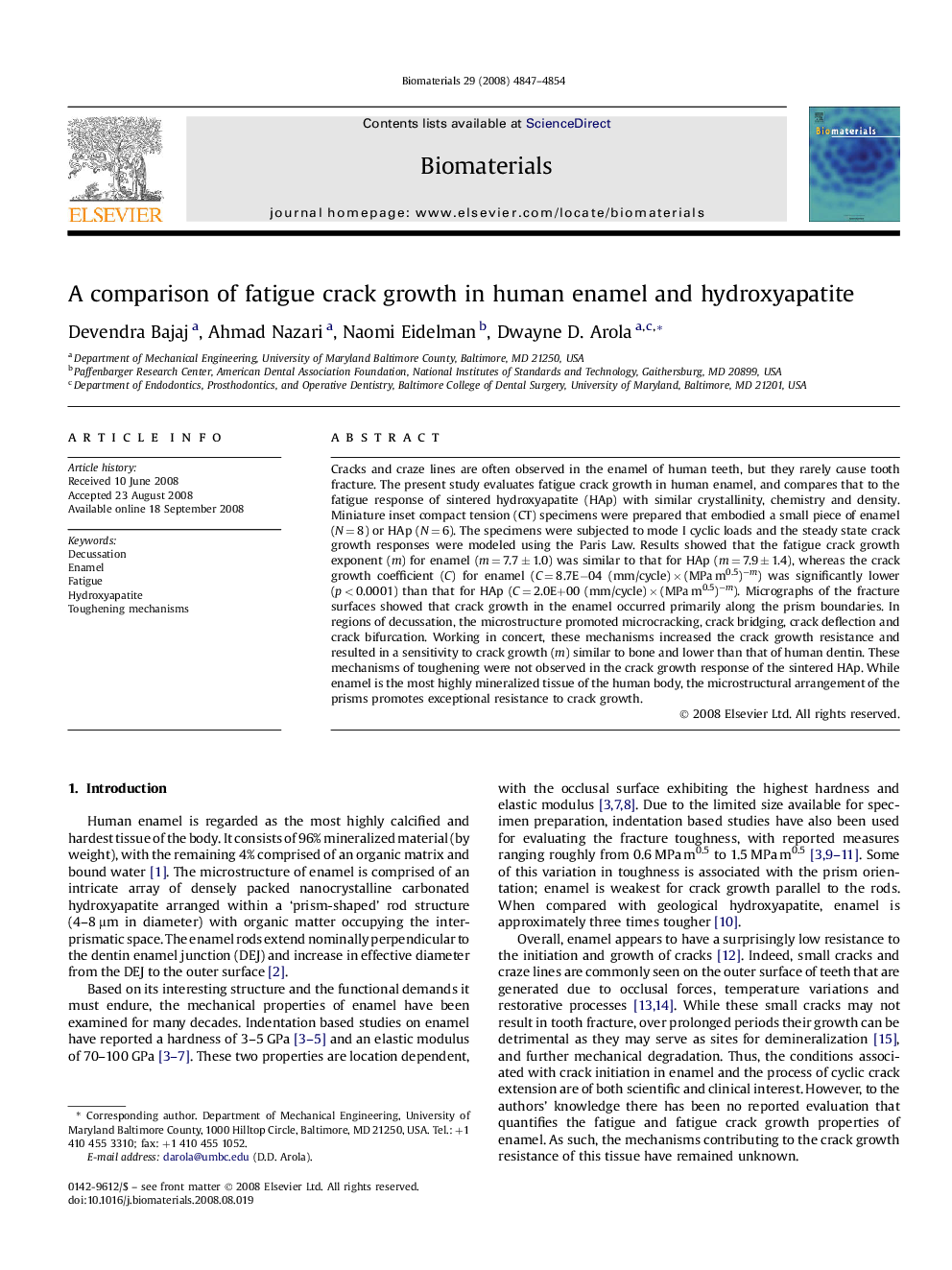| کد مقاله | کد نشریه | سال انتشار | مقاله انگلیسی | نسخه تمام متن |
|---|---|---|---|---|
| 9077 | 616 | 2008 | 8 صفحه PDF | دانلود رایگان |

Cracks and craze lines are often observed in the enamel of human teeth, but they rarely cause tooth fracture. The present study evaluates fatigue crack growth in human enamel, and compares that to the fatigue response of sintered hydroxyapatite (HAp) with similar crystallinity, chemistry and density. Miniature inset compact tension (CT) specimens were prepared that embodied a small piece of enamel (N = 8) or HAp (N = 6). The specimens were subjected to mode I cyclic loads and the steady state crack growth responses were modeled using the Paris Law. Results showed that the fatigue crack growth exponent (m) for enamel (m = 7.7 ± 1.0) was similar to that for HAp (m = 7.9 ± 1.4), whereas the crack growth coefficient (C) for enamel (C = 8.7E−04 (mm/cycle) × (MPa m0.5)−m) was significantly lower (p < 0.0001) than that for HAp (C = 2.0E+00 (mm/cycle) × (MPa m0.5)−m). Micrographs of the fracture surfaces showed that crack growth in the enamel occurred primarily along the prism boundaries. In regions of decussation, the microstructure promoted microcracking, crack bridging, crack deflection and crack bifurcation. Working in concert, these mechanisms increased the crack growth resistance and resulted in a sensitivity to crack growth (m) similar to bone and lower than that of human dentin. These mechanisms of toughening were not observed in the crack growth response of the sintered HAp. While enamel is the most highly mineralized tissue of the human body, the microstructural arrangement of the prisms promotes exceptional resistance to crack growth.
Journal: Biomaterials - Volume 29, Issue 36, December 2008, Pages 4847–4854